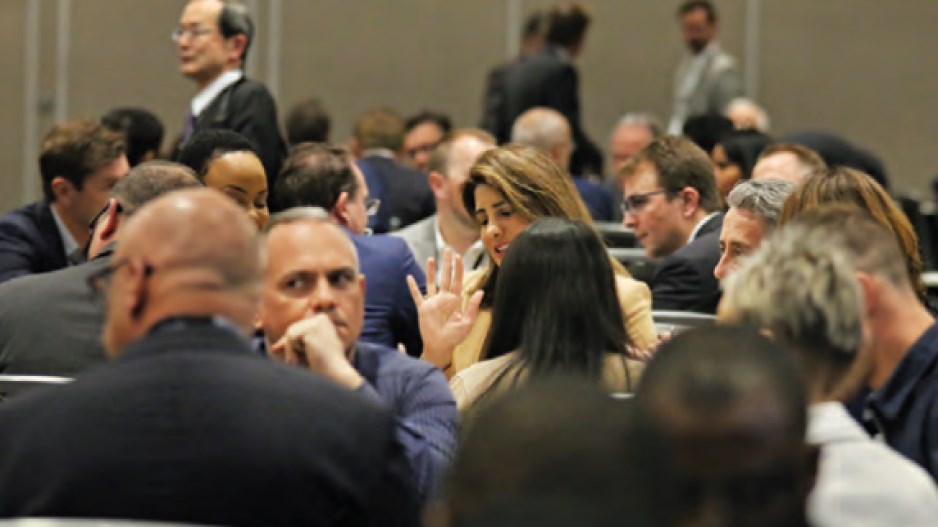Ports around the world have done much to try to alleviate cargo congestion over the last two years, but more – much more – needs to be done.
That is the conclusion of shipping companies that use ports and freight lines to move cargo globally and the overriding concerns expressed by maritime freight officials at the IAPH World Ports Conference in Vancouver last week.
The conference, which ran for four days at Vancouver Convention Centre East, gathered representatives from top ports around the world to discuss the latest set of challenges facing the industry and to celebrate major achievements.
This year’s edition, unsurprisingly, centred on three main topics:
- global supply chain disruption; •
- digitization of the sector; and •
- creation of a greener, more sustainable port industry.
The Vancouver Fraser Port Authority, on the last front, got in on the action by announcing at the conference a joint initiative with Seattle, Alaska and cruise operators to develop the first “green corridor” in the Pacific Northwest.
But the conference also offered a rare chance for shippers to bring their concerns to ports, and that was what Lori Fellmer – vice-president of logistics and carrier management at New Jersey-based chemical firm BassTech International – did.
“It’s amazing to see the sorts of civic works being done to support shipping,” Fellmer told the conference’s “What cargo owners expect from ports” session, noting that the port officials have done much in terms of direct infrastructure at port facilities.
“But now we are asking you to continue your focus looking beyond the berth and looking inland – and saying, ‘How do we get things moving collectively with our other service provider partners so that, when freight lands here, it’s moving onward smoothly?’”
Fellmer added that she and other shippers in the industry are especially frustrated by “gaps” –portions of a transport route of cargo where information on expected processing times can be almost impossible to find.
She noted that many shippers can get accurate assessments from freight lines on the arrival times of a vessel into port, as well as the arrival time of cargo once it gets on a train leaving the port for its final destination.
But Fellmer said the gap – during which cargo sits at a port – is akin to an information black hole.
“I think one of the big black holes ... is the gap between cargo that’s destined to move by rail after discharges [from a vessel] and before it gets onto a train,” Fellmer said.
“And I don’t know how many of you have ever had that conversation, but I can recite it in my sleep: ‘We don’t know when [the cargo] is going to move; the port is very congested.’
“Yes, I know the port is very congested; is there one container or 1,000 containers before mine gets on a train?” she continued, hypothetically asking an imaginary port official during her presentation. “‘We don’t know.’ And I do believe that, but that’s a shame in that it shows a real lack of ... alignment between various service providers in that function.”
Fellmer said it is crucial for ports to develop someone in a “go-to” role, a one-stop shop for shippers to call and find out exactly where in line their cargo is when it is sitting at a port terminal, waiting to be transported onto a train or a truck.
That lack of information when cargo goes through a port contributes to several major issues shippers have with ports: speed of cargo arrival at its destination, predictability of that movement and alignment of all port stakeholders.
Without addressing these issues, a port risks losing business – especially if a shipper has options at competing ports, Fellmer said.
“These are complicated decisions that are taken,” she noted when asked if shippers would consider routing cargo through a smaller, less congested port. “... When a shipper has a choice? Yes, we would absolutely consider those things [like], ‘Avoid this port’ or ‘There’s nothing moving through the rail.’”
The message from shippers comes at a crucial time for Canadian ports like Vancouver. Speaking via a video introduction to open the conference, Canadian Prime Minister Justin
Trudeau reiterated that ports – as part of the transportation sector – have to play a major role in fighting climate change and jump-starting the economic rebound after COVI D-19. Trudeau noted that Ottawa has proposed increased funding for national trade corridors to increase the system’s resiliency and had discussions at the national supply chain summit back in January to resolve issues surrounding efficiency in connecting various transport modes.
But even the prime minister admitted that much more needs to be done.
“As always, big problems don’t have simple solutions,” Trudeau said. “So let’s keep working together to help our economies recover, fight climate change and mitigate supply chain pressures.” •




